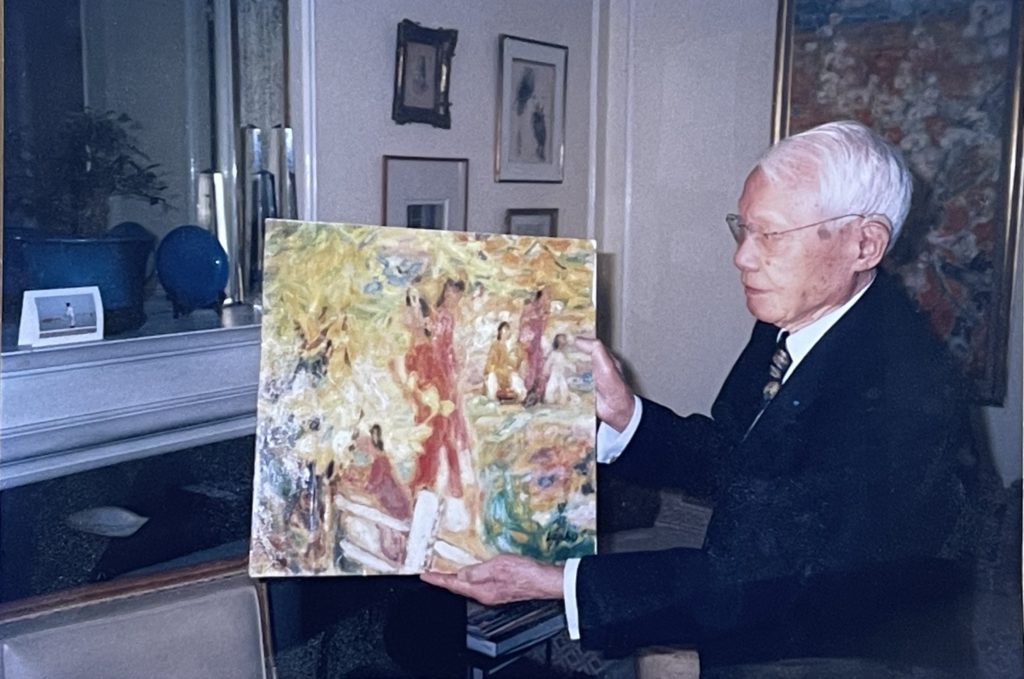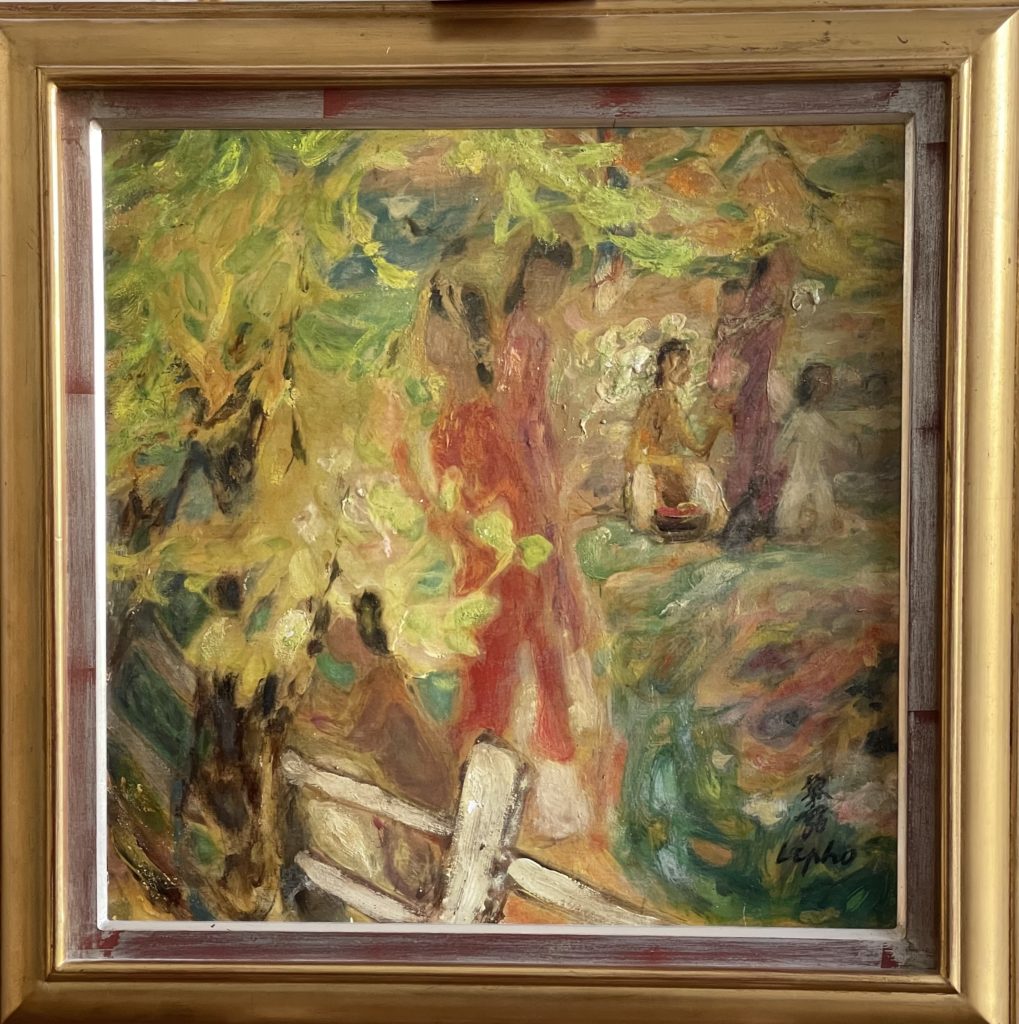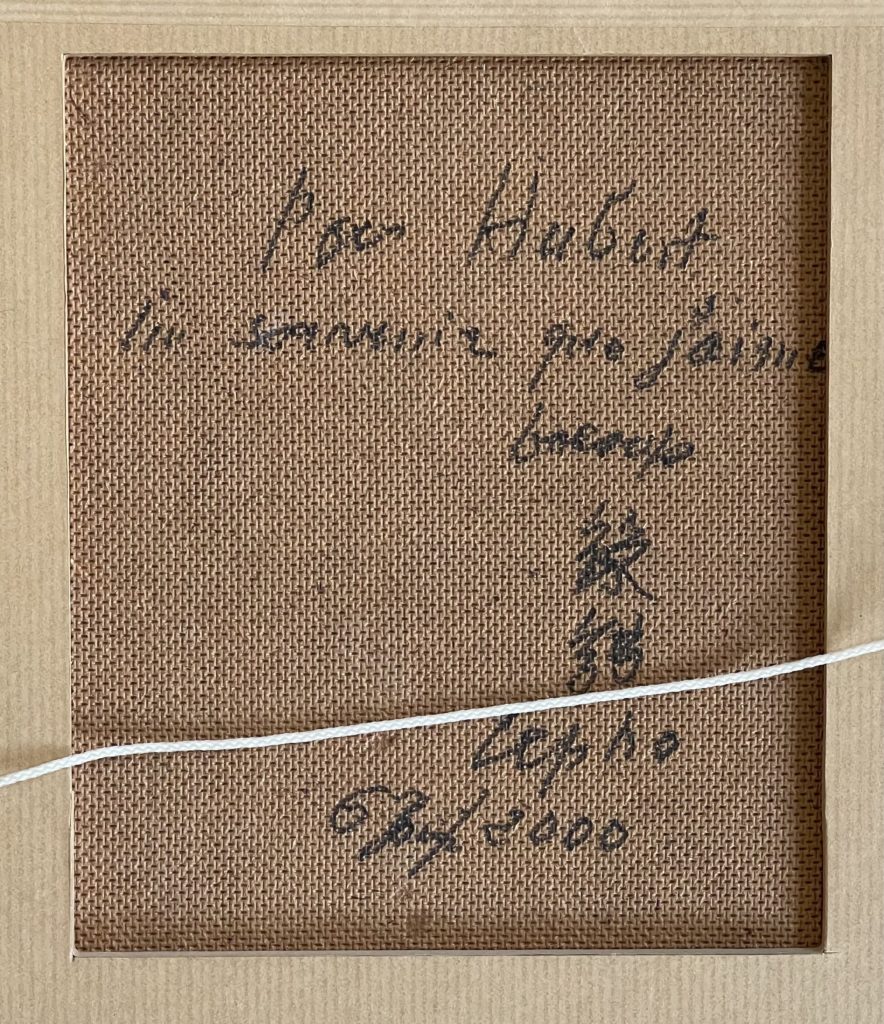Paris, September 6, 2000: the gift of Le Pho
On September 6, 2000, I walked to Le Pho’s home at 235 bis Rue de Vaugirard, the longest street in Paris, in the 15th arrondissement, as I often did.
The Haussmann building is familiar: its slightly dark entrance, the elevator, the high floor, the exit to the right of the car.
The doorbell rang, and the door opened to reveal the painter. He was tirelessly elegant in his jacket and tie, and his shirt had a starched collar.
“A young son of a mandarin, so distinguished, so delicate, so intelligent.” This is how Jean Tardieu, Victor’s son, described him in a letter dated February 5, 1928, from Hanoi to his friend Michel Pontremoli. The painter was only 19 years old at the time. In the 72 years since, the patina of time has crystallized these qualities.
After the ritual of our greetings—me deferential, him benevolent—we didn’t have time to start the Perrier or chilled Schweppes that were always laid out on the small table in the living room. Suddenly, the painter wandered off to his room and returned with a luminous painting. He froze it in my hands and said,
“This is for you. This is to thank you.”

I was filled with gratitude and enjoyed being a ludion between the signifier and the signified.
I immediately admired the work that Le Pho had chosen for me. It dates from around 1957, which was 20 years after he had moved to Paris permanently.
Around 1957, the artist rediscovered the optimism already evident in his painting “Le philosophe”, dated 1956. The post-war years were difficult for the painter, with a flat art market in France, and a growing disinterest of Indochina in the French metropole, which was seen as the end of a dream or a nightmare, depending on the sensibilities of those involved.
This optimism is reflected in this 50 x 50 cm work, which is a mixed technique on silk mounted on Isorel and features vivid colours and a thick varnish. As usual, Le Pho depicts women and children, but in a new style that foreshadows his work from 1963 onwards for the American gallery Findlay, which will be in oil on canvas. His cheerful brushstrokes testify to his newly found energy. The same ardour is evident in his larger-than-usual signature in the bottom right-hand corner.
A barrier at the bottom of the stage forces us to step over it into the scene. Lush vegetation – but schematically, Le Pho is not a botanist – women in áo dài, with their Tonkinese hairstyles, children. All elements that, graphically, have more to do with a quotation than a description.
More precisely, in the upper right, there are two women. One is seated and seems to be serving food or a drink. The other is standing and carrying a child in her arms. Another older child is beside them. In the middle, filling the scene, are two other women without distinct faces. They are positioned at an angle, almost Janus like.

At lower left, figures (child? woman?) blend into the vegetation.
The moment was liturgical. I saw Le Pho grab a black felt-tip pen and inscribe this dedication on the back of the work:
“Pour Hubert un souvenir que j’aime beaucoup”, signed in Chinese and Roman letters, and dated 6 Sept 2000.

Through his dedication, the painter himself gives us the meaning of his painting.
“A memory”… “that I love very much”.
It captures the essence of Vietnam in a diluted form.
There’s a strong, distant smell and blurred near vision. It’s not confusion, but rather a muddled state of being, like a pictorial confirmation of Sartre’s concept that existence precedes essence. It’s not the manifesto of an exile, but of a conqueror.
As I left the apartment, proud, moved, and happy, I immediately went to the framer Guillaume Martel to give the work the setting it deserved.
A token of gratitude, an expression of the passing of the baton and a crystallization of the painter’s feelings, this talisman-painting remains for me, 25 years later, a kind of ointment against all mediocrity.
“Un peu de temps à l’état pur” (a little time in its purest state) as Marcel Proust wrote in Le temps retrouvé (Time Regained).
Is that a sign? I’ve never found a title for it.
Jean-François Hubert